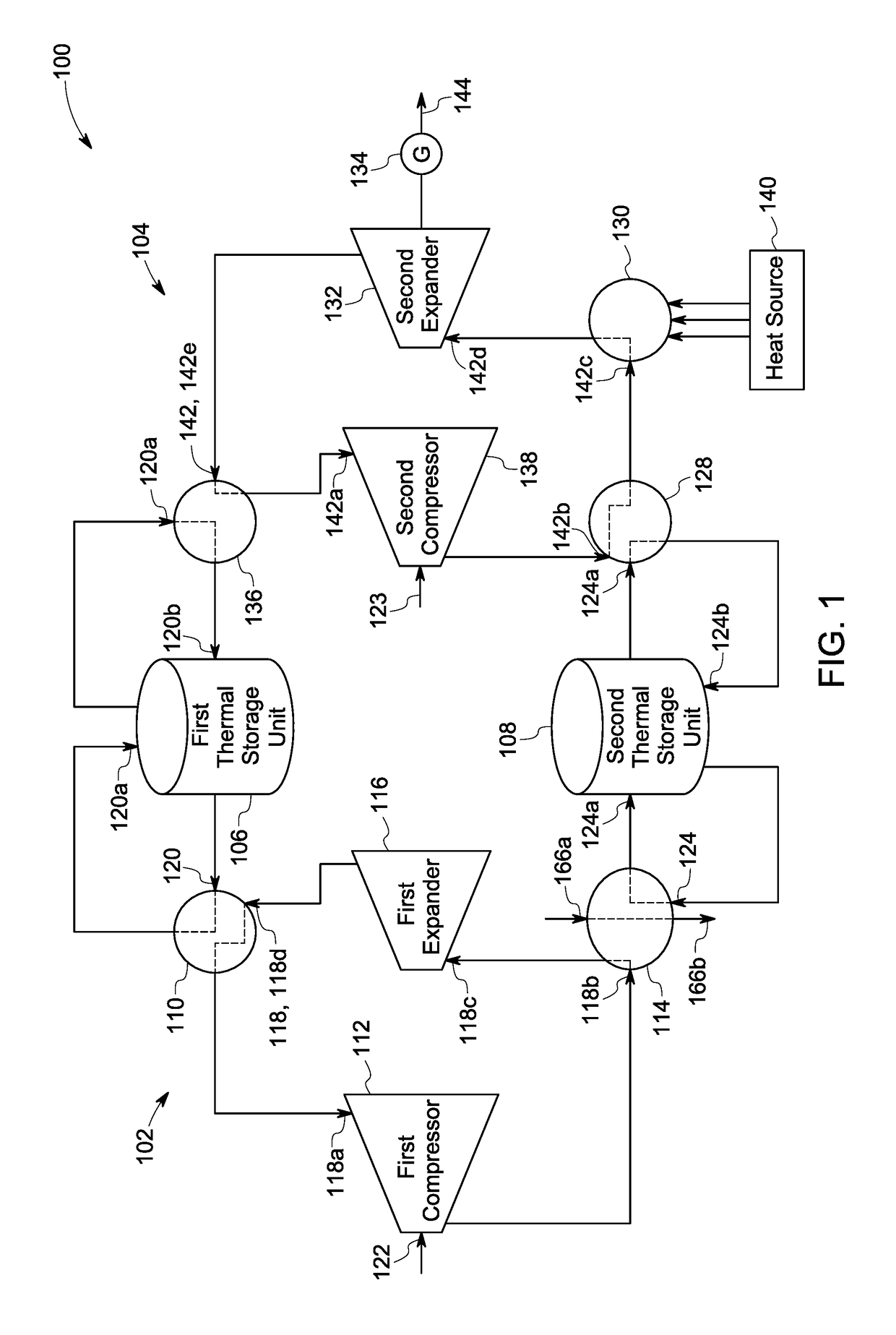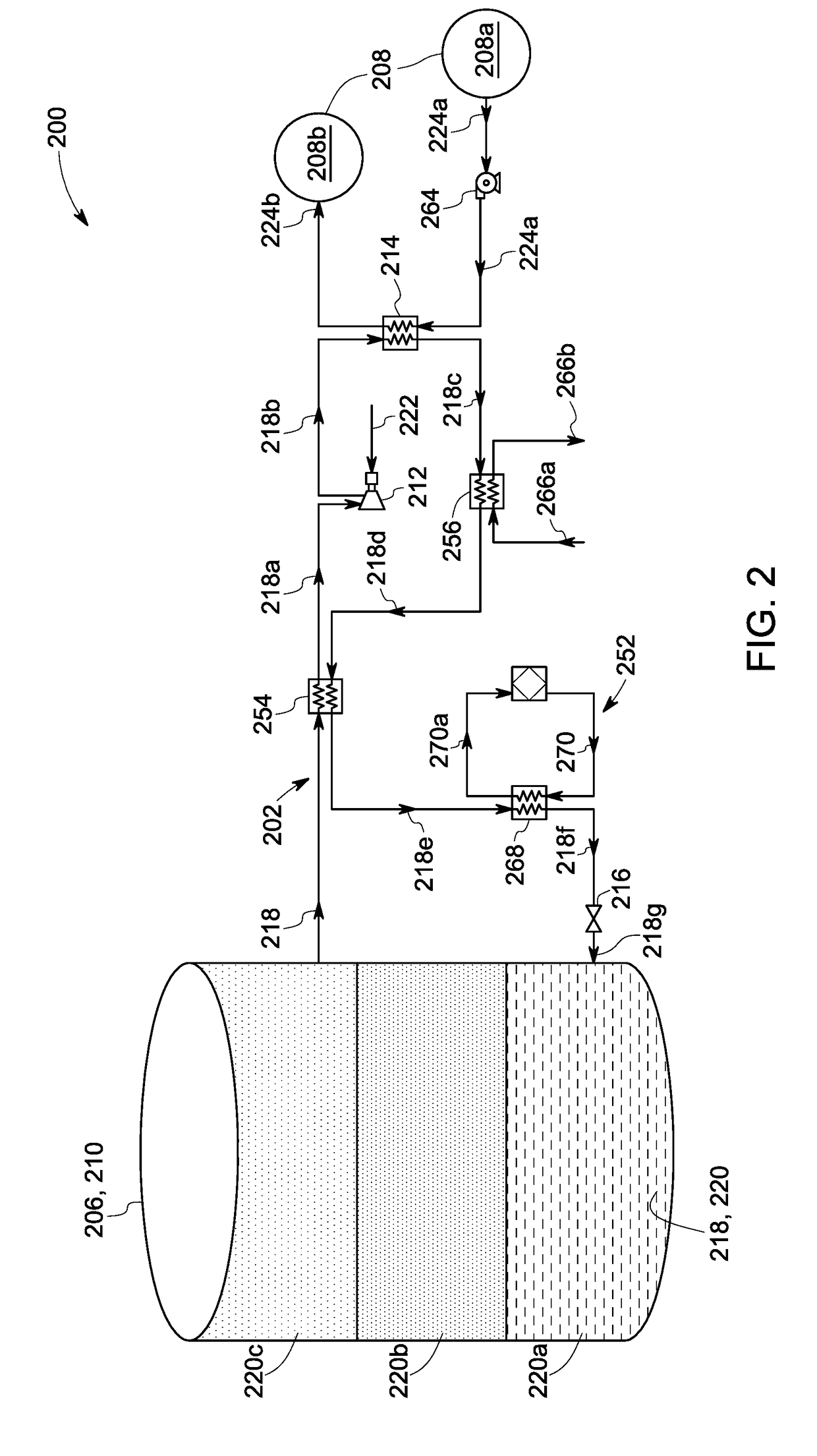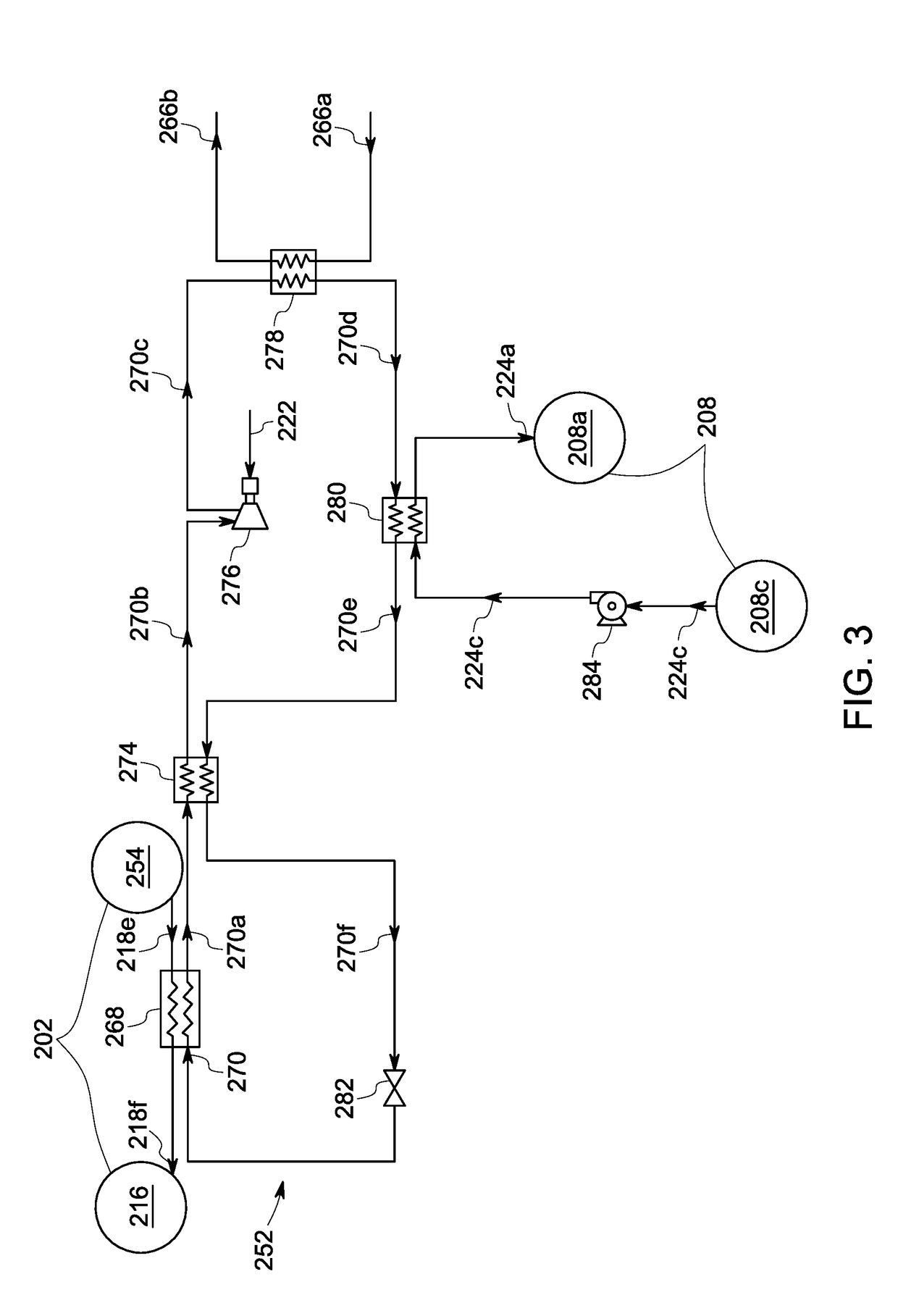Thermoelectric energy storage system and an associated method thereof
a technology of energy storage system and thermal energy, which is applied in the direction of indirect heat exchangers, machines/engines, lighting and heating apparatus, etc., can solve the problems of limited deployment, limited thermodynamic cycle performance in charge cycle and discharge cycle, and significant temperature between working fluid and thermal sour
- Summary
- Abstract
- Description
- Claims
- Application Information
AI Technical Summary
Benefits of technology
Problems solved by technology
Method used
Image
Examples
Embodiment Construction
[0017]Embodiments discussed herein disclose a thermoelectric energy storage system including a refrigeration system, a power system, a first thermal storage unit, and a second thermal storage unit. In certain embodiments, the thermoelectric energy storage system is configured to efficiently store a portion of thermal energy in the second thermal storage unit (hereinafter also referred to as an “intermediate thermal storage unit”) while operating the refrigeration system. Further, the thermoelectric energy storage system is configured to retrieve the portion of the thermal energy from the intermediate thermal storage unit while operating the power system. In certain embodiments, the refrigeration and power systems are operated in a time-shift arrangement. In other words, the refrigeration and power systems are operated alternately. For example, the refrigeration system may be operated during night, when a demand for electric power is lower, and the power system may be operated during...
PUM
 Login to View More
Login to View More Abstract
Description
Claims
Application Information
 Login to View More
Login to View More - R&D
- Intellectual Property
- Life Sciences
- Materials
- Tech Scout
- Unparalleled Data Quality
- Higher Quality Content
- 60% Fewer Hallucinations
Browse by: Latest US Patents, China's latest patents, Technical Efficacy Thesaurus, Application Domain, Technology Topic, Popular Technical Reports.
© 2025 PatSnap. All rights reserved.Legal|Privacy policy|Modern Slavery Act Transparency Statement|Sitemap|About US| Contact US: help@patsnap.com



